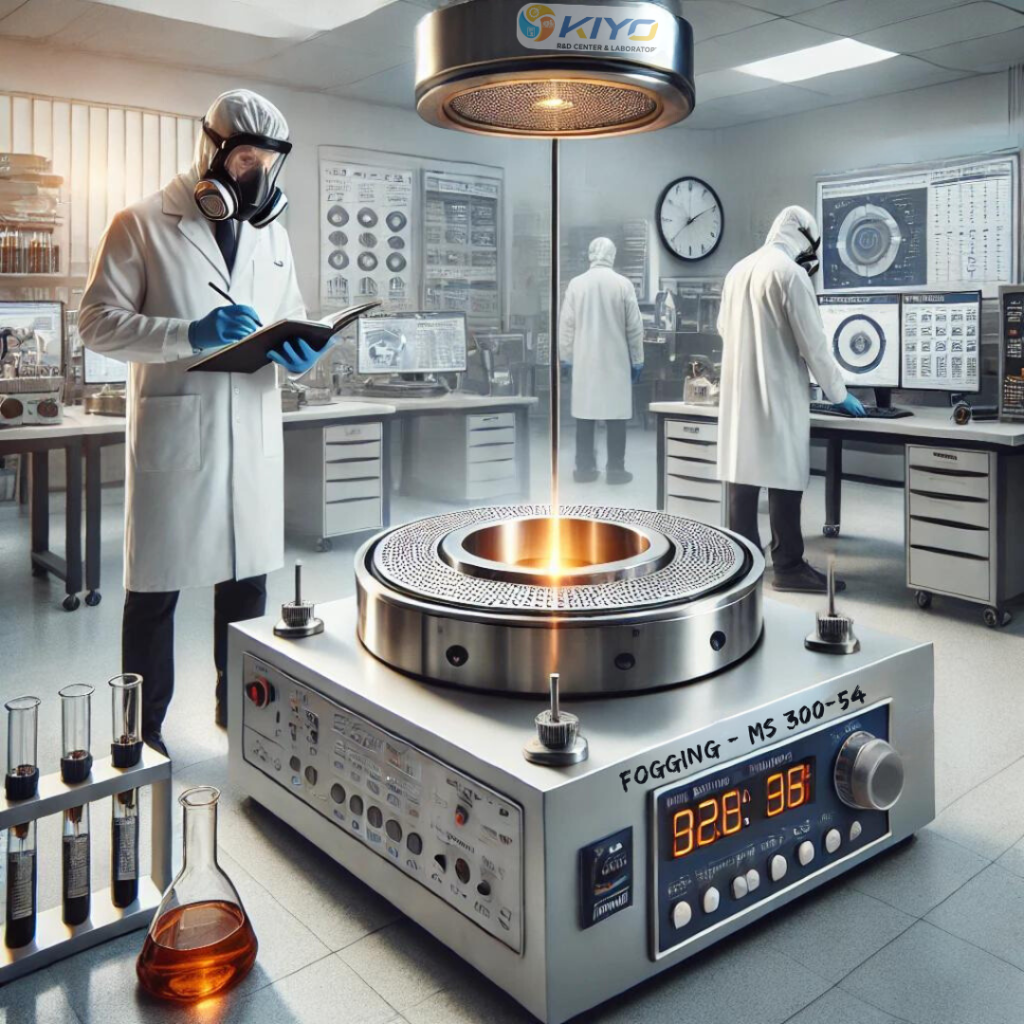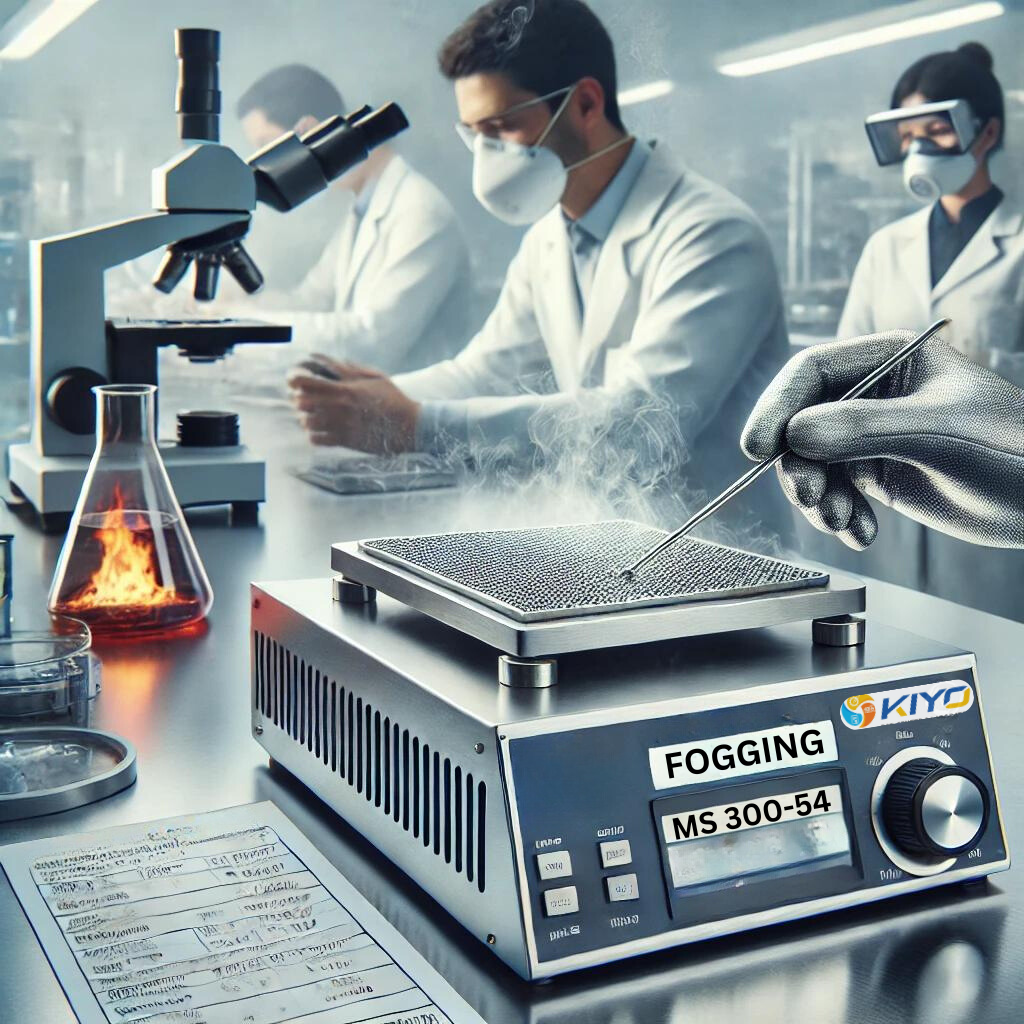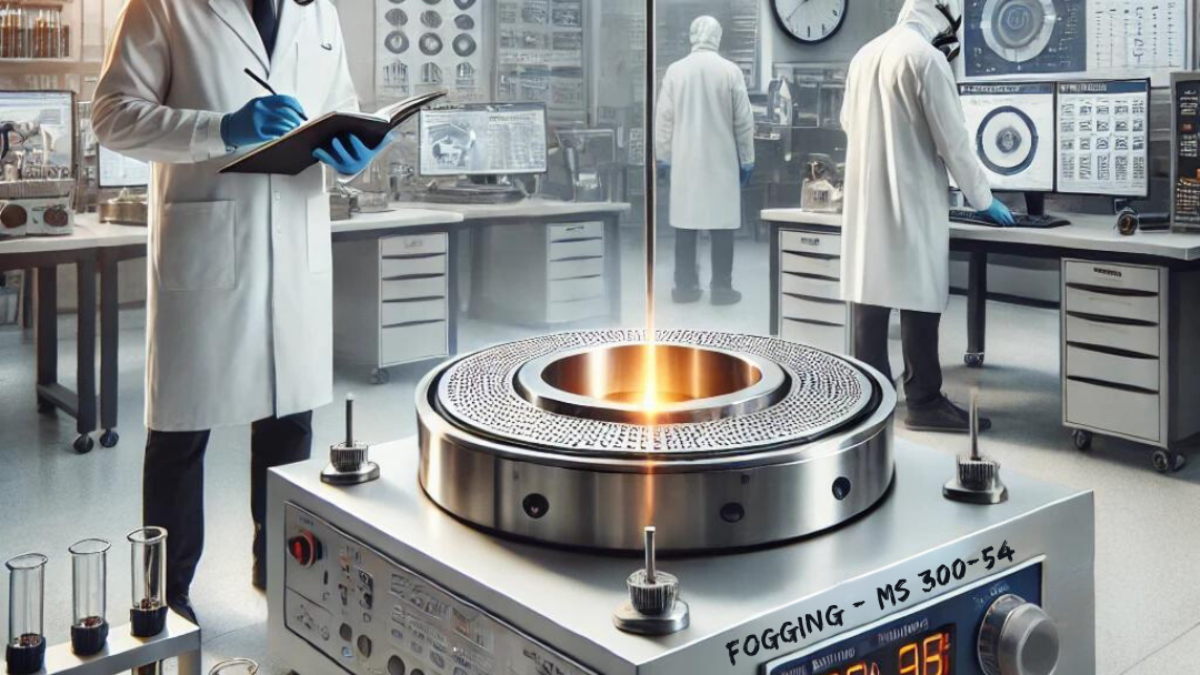Fogging - MS 300-54
The Role of Fogging - MS 300-54 Testing in Material Quality Assurance
Introduction:
- In the realm of material testing, the Fogging - MS 300-54 test plays a pivotal role in determining the suitability of materials for various applications. This test focuses on assessing the potential of materials to release volatile substances when exposed to heat, which can lead to fogging on surfaces. Kiyo R&D Center & Laboratory excels in performing this critical test, helping industries ensure their materials meet stringent quality requirements.

Understanding the Test Process:
The Fogging – MS 300-54 test involves placing a sample material on a heated metal plate to simulate operational conditions. As the material is heated, any volatile substances it emits are captured on a cooler surface, allowing us to measure the degree of fogging. This setup mimics real-world scenarios where materials are exposed to varying temperatures.
At Kiyo R&D Center & Laboratory, our advanced facilities are equipped with the latest technological tools to conduct this test with high precision. We use sophisticated temperature sensors and control systems to monitor the testing environment meticulously, ensuring reliable and reproducible results.
Importance Across Industries
This test is essential for the automotive industry, where interior components must not emit substances that could fog up windshields, potentially obstructing the driver’s view. In aerospace, clear visibility of instrumentation is crucial, and materials must be rigorously tested to prevent any fogging that could impair functionality.
Additionally, the Fogging – MS 300-54 test is valuable in other sectors such as electronics, where clarity of screens and optical components is critical. Any industry relying on materials that must remain clear under heat exposure will find this test indispensable.

Conclusion:
- The Fogging - MS 300-54 test is a cornerstone of material quality assurance. Kiyo R&D Center & Laboratory's dedication to precise testing ensures that our clients receive accurate insights into their materials' performance. By identifying potential fogging issues early, we help industries maintain high standards of safety and functionality in their products. Rely on our expertise to keep your materials clear and your products reliable.

